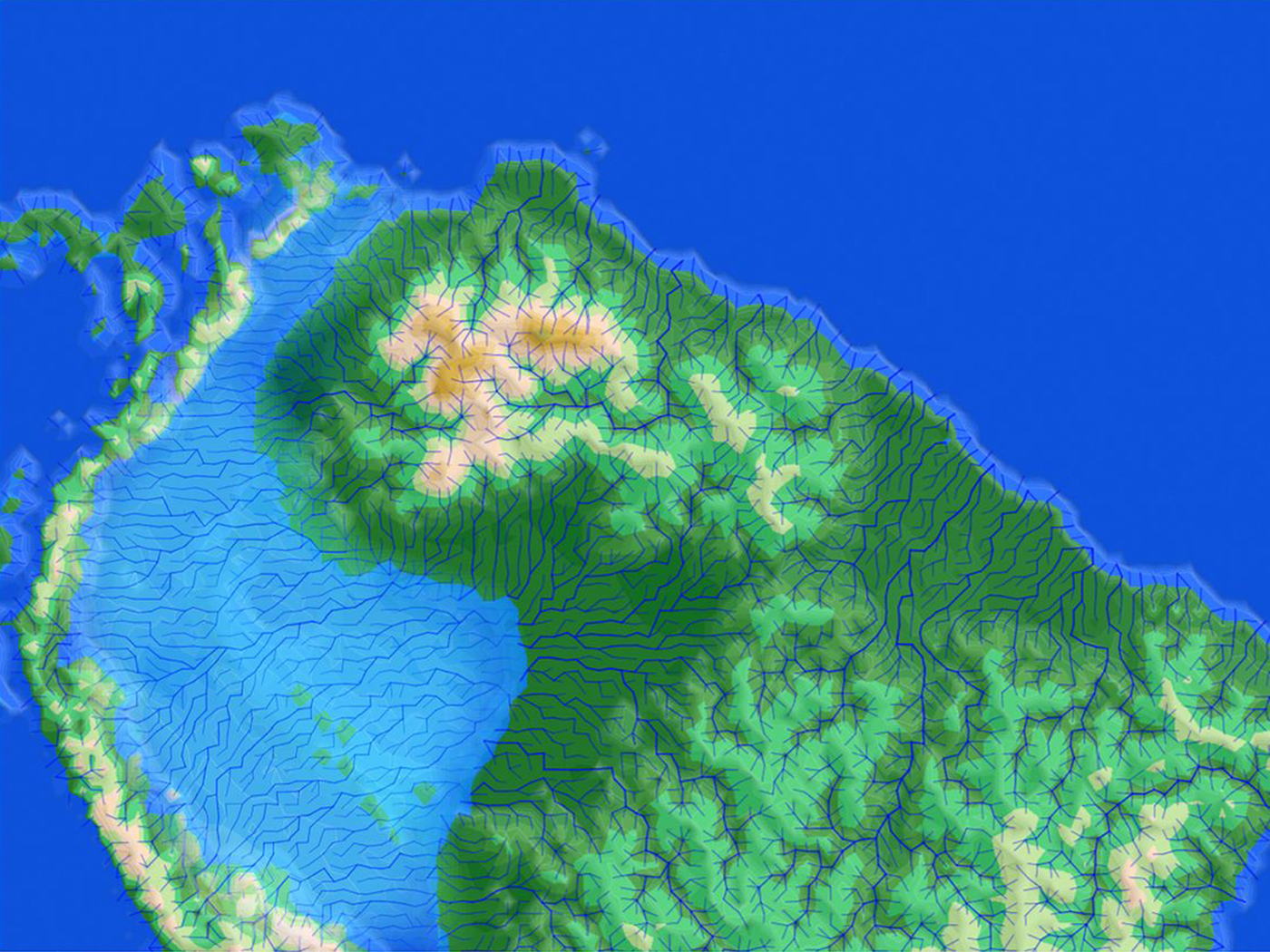Secular science believes Earth’s oceans have existed for about four billion years.1 They also think the level of the ocean has remained about the same over that vast period of time. However, a new study published in Nature creates serious problems for the uniformitarian origin of our oceans and their long-term sustainability.2
Chen Cai and his colleagues from Washington University in St. Louis found that the global water flux into the mantle was three times greater than previously estimated.2
The researchers used ocean-bottom seismographs near the deep Mariana Trench in the western Pacific Ocean. The team estimated the volume of water trapped in rocks that were being dragged down into the mantle by subduction. By studying changes in the velocity of shear waves generated by earthquakes, the scientists were able to calculate the volume of water trapped in rocks both before and after subduction.2
This study was the first to differentiate the volume of water locked in cracks and pores from the water locked in minerals like serpentine, referred to as hydrous minerals.2
Interestingly, they found that the water content in the rocks begins to change about 50 miles east of the trench, about the same distance that faulting and earthquake activity starts to occur in the ocean crust prior to subduction.2
Chai and his team were also able to extend their knowledge of water volume deeper than previous studies, down to depths of 18-30 miles, about 15 miles below the base of the crust.2
They concluded that at least 4.3 times more water is being subducted into the Mariana Trench than what was previously estimated.2
Stepping back and taking a more global view, they further determined:
In other words, there is a whole lot more water going back into the mantle than previously thought. And the volume being input into the mantle is much greater than the smaller volume that is observed coming back out. This doesn’t bode well for the long-term stability of ocean levels or total volume.
Chai and his team concluded:
Most secular scientists believe plate tectonics and subduction have been active on Earth for a few billion years at least. With more water constantly going into Earth, ocean levels should have dropped over these claimed vast amounts of geological time. The question is why not?
Douglas Weins, one of the co-authors of the study tried to explain this watery conundrum. “The estimates of water coming back out through the volcanic arc [island volcanoes] are probably very uncertain. This study will probably cause some re-evaluation.”3
Chai’s team also added, “Thus, the most likely interpretation is that previous estimates of water output from the mantle are also underestimated.”2 And yet the authors note that mantle output of water from volcanic activity at ocean ridges is relatively well known.2
Have scientists really miscalculated the amount of water coming out of the mantle? Or is there another solution to this apparent quandary?
If we accept the book of Genesis, there is no dilemma. God’s Word tells us of the global Flood that occurred about 4,500 years ago, destroying the world that then was (2 Peter 3: 5-6). It also appears that runaway subduction was one of the mechanisms used to bring about this global catastrophe.4,5
Our oceans still hold about 97% of the world’s total water because they are young. ![]()
So, the net loss of water from the oceans hasn’t been going on for billions of years as secular geologists suppose. It has only been occurring for around 4,500 years. Our oceans still hold about 97% of the world’s total water because they are young.
References
1. Garrison, T. and R. Ellis. 2016. Oceanography: An Invitation to Marine Science, 9th ed. Boston, MA: Cengage Learning.
2. Cai, C. et al. 2018. Water Input into the Mariana Subduction Zone Estimated from Ocean-bottom Seismic Data. Nature. 563: 389-392.
3. Washington University in St. Louis. “Seismic study reveals huge amount of water dragged into Earth’s interior.” ScienceDaily. Posted on sciencedaily.com November 14, 2018.
4. Baumgardner, J. 1994. Runway Subduction as the Driving mechanism for the Genesis Flood. in: Proceedings of the Third International Conference on Creationism, R. E. Walsh (Ed.). Pittsburgh, PA: Creation Science Fellowship, 63-66.
5. Clarey, T. 2018. Cold Slabs Indicate Recent Global Flood. Creation Science Update. Posted on ICR.org November 8, 2018.
*Dr. Clarey is Research Associate is at ICR. He has a doctorate in geology from Western Michigan University.
























